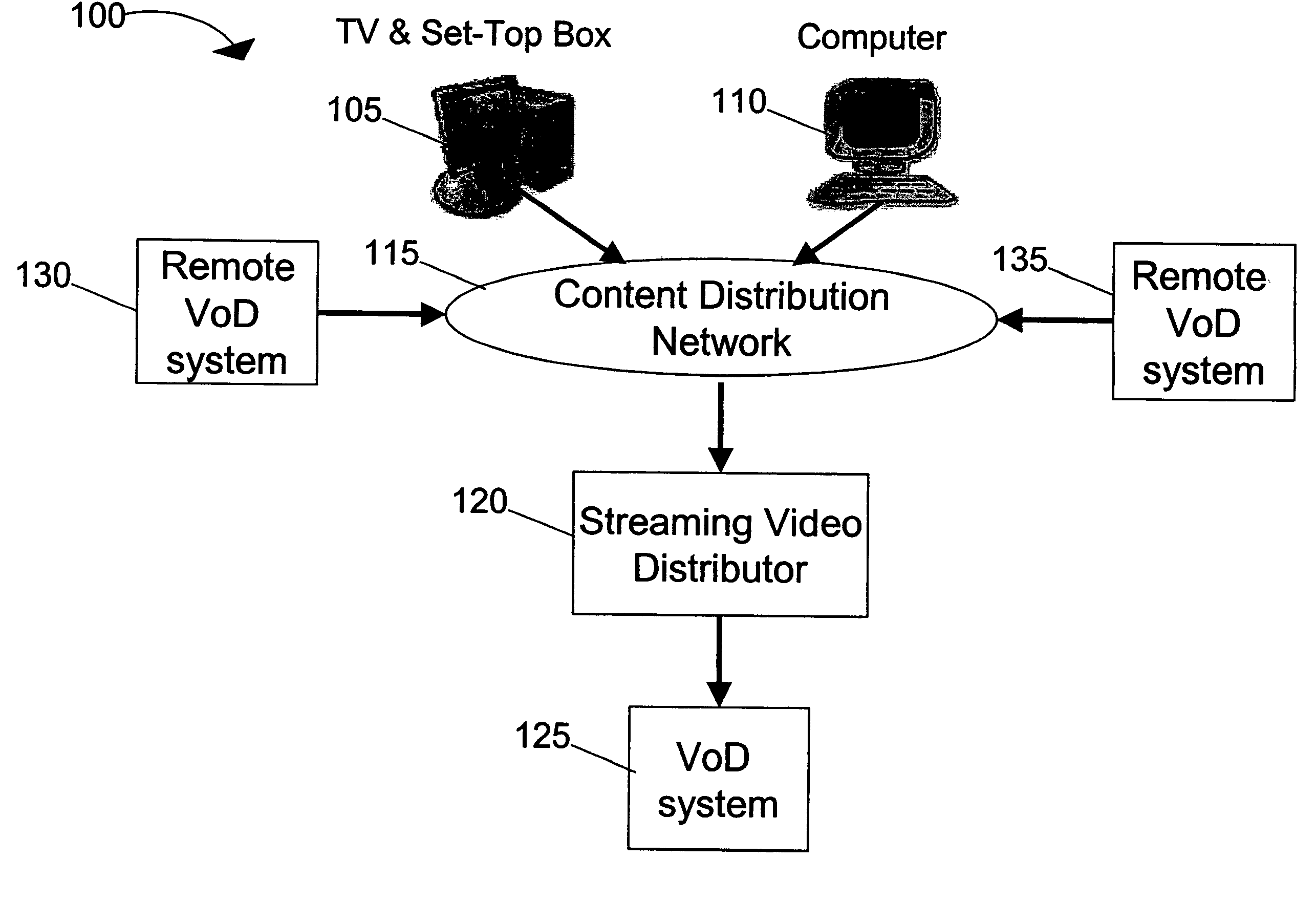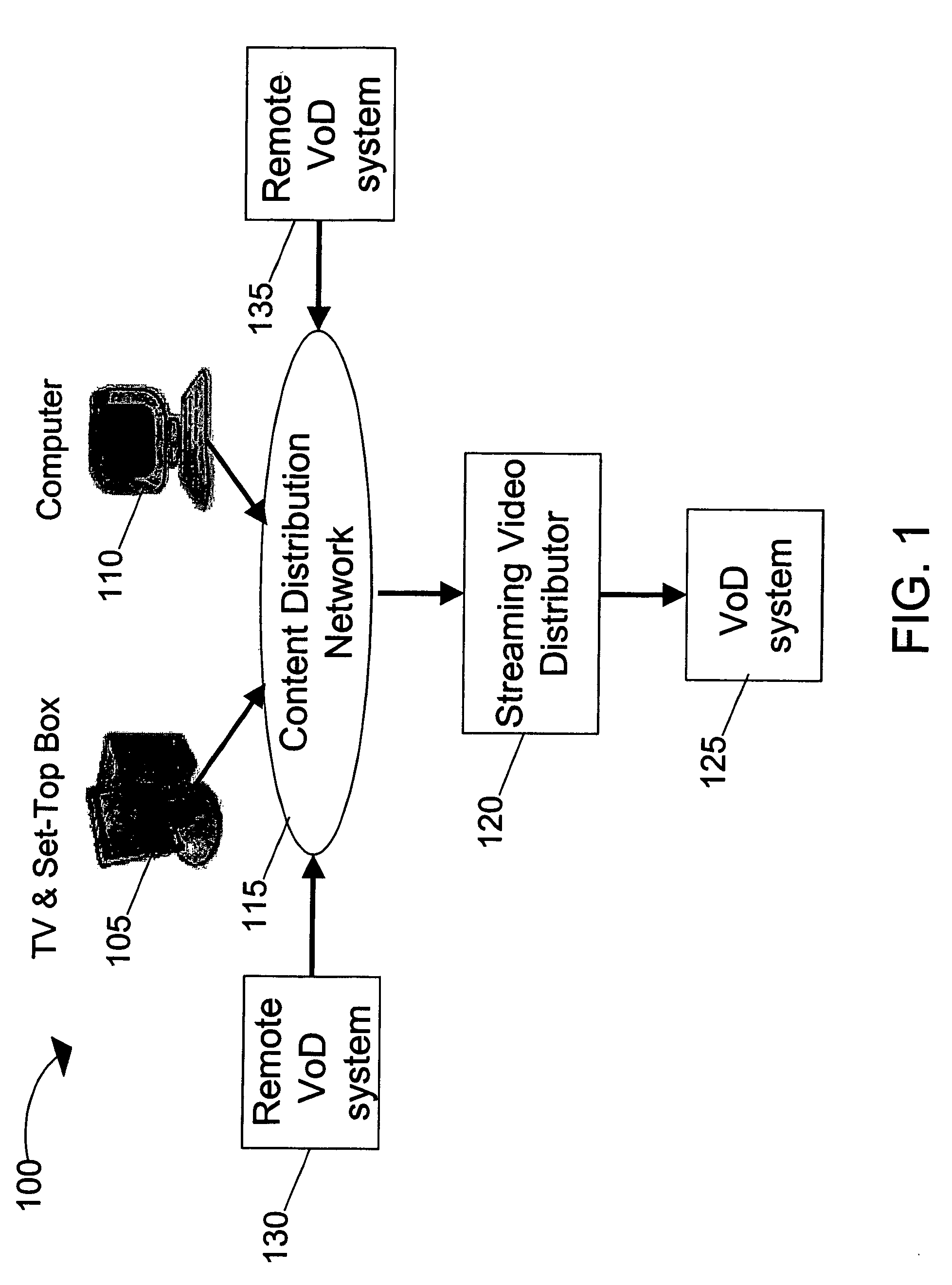Systems and methods for load balancing storage and streaming media requests in a scalable, cluster-based architecture for real-time streaming
a cluster-based, real-time streaming technology, applied in the field of cluster-based streaming content assets, can solve the problems of high system cost, high streaming bandwidth, and high bandwidth of streaming video, and achieve high streaming and storage capacity, high scalable and failure-resistant
- Summary
- Abstract
- Description
- Claims
- Application Information
AI Technical Summary
Benefits of technology
Problems solved by technology
Method used
Image
Examples
Embodiment Construction
[0060] Generally, the present invention provides loosely-coupled cluster-based VoD systems comprising a plurality of servers based on storage attached to the plurality of servers. Videos, music, multi-media content, imagery of various types and / or other content assets, are replicated within the system to increase the number of concurrent play requests for the videos, music, multi-media content, or other assets serviceable. For convenience these various videos, movies, music, multi-media content or other assets are referred to as content assets; however, it should be clear that references to any one of these content assets or content asset types, such as to video or movies, refer to each of these other types of content or asset as well.
[0061] Content assets as used herein generally refer to data files. Content assets stored in, and streamed from, VoD systems discussed herein preferably comprise real-time or time-based content assets, and more preferably comprise video movies or othe...
PUM
 Login to View More
Login to View More Abstract
Description
Claims
Application Information
 Login to View More
Login to View More - R&D
- Intellectual Property
- Life Sciences
- Materials
- Tech Scout
- Unparalleled Data Quality
- Higher Quality Content
- 60% Fewer Hallucinations
Browse by: Latest US Patents, China's latest patents, Technical Efficacy Thesaurus, Application Domain, Technology Topic, Popular Technical Reports.
© 2025 PatSnap. All rights reserved.Legal|Privacy policy|Modern Slavery Act Transparency Statement|Sitemap|About US| Contact US: help@patsnap.com



